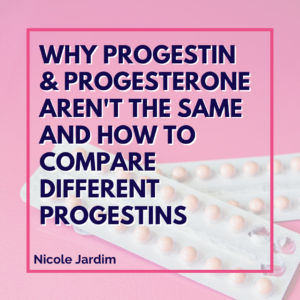Written by my Spring 2017 apprentice, Manisha Sharma, this post discusses the challenges with hormone testing and compares the three methods used!
In my practice, I often see patients who want me to check their hormones. They’ve often had labs done by their family doctor and were told that everything looks “normal”, but they don’t quite feel right.
Traditionally, all hormone testing is done via serum (or blood), but these days, we can use serum, saliva, urine, or a combination of all three to get the full picture. Before being labeled as “normal” and wondering what the heck is going on, let’s make sure that your hormones are being tested optimally.
Here are the main challenges with testing hormones:
#1 – We’re just getting a snapshot in time
Our hormones are dynamic – not only do their levels change throughout the month, they actually change drastically throughout the day! For example, testing cortisol, testosterone, and even thyroid hormones in the morning will help you get a more accurate picture.
#2 – Hormones have no function in our blood
Hormones are chemical messengers transported to target tissues via the blood. Therefore, the amount of hormones in our blood is not the most important piece of information. It’s more valuable to know how much of the hormone in the blood is active and available to target tissues.
#3 – Conventional lab ranges are much too wide
As conventional lab ranges are based on a bell curve analysis of all of the population that visited the lab over a certain period of time, many of whom are sick, this has lead to an ever-broadening reference range. Doctors who practice with a functional perspective will compare your hormone levels to a tighter, more optimal range.
#4 – It’s all about timing
Our hormones ebb and flow throughout the month, so it’s important to check them at the right time. The first phase of your cycle, the follicular phase, is estrogen dominant, while the second phase, the luteal phase, is progesterone dominant.
For someone with a 28-day cycle, we would test serum estradiol on day 3 for fertility patients and on day 21, along with progesterone, in order to get an estrogen to progesterone ratio. Usually salivary and urine hormone tests are done on days 19-22 of a 28 day cycle.
Let’s compare the three different methods of hormone testing, shall we?
Serum testing
This is the most widely accepted way of testing hormones in the conventional medical world, and therefore the most accessible. Serum is great for testing peptide hormones (like FSH, LH, prolactin, insulin, and thyroid hormones) and binding globulins (like sex hormone binding globulin, or SHBG).
It’s not so great, however, for predicting the bioavailability of sex hormones. This is because serum tests are generally reported as total hormone levels, rather than free (active) levels. This may cause your results to look normal, when in reality, the majority of your hormone could be bound and therefore inactive. Testosterone is an exception though, as it can be tested in both total and free forms, allowing for a full picture.
Saliva testing
This is a relatively non-invasive form of testing (although it’s harder than you think to collect that much spit!), that is accessible to patients of naturopathic doctors and other functional medicine practitioners.
Simply the fact that it’s so non-invasive can bode well for the accuracy of your results as those who are afraid of needles can see falsely high cortisol levels in serum testing. Since saliva is easier to collect, these tests allow for multiple snapshots in time in order to see the big picture.
For example, diurnal testing can be done where cortisol can be measured multiple times per day (morning, noon, afternoon, and evening) and sex hormones can be measured all month long. Saliva testing looks at free hormone levels, thereby allowing us to see what has reached target tissues.
One drawback of salivary testing is that saliva gets oversaturated when patients are on hormone replacement therapy, leading to an abnormally high result. Therefore, you may need to talk to your doctor about discontinuing HRT a few days before collecting to see more accurate results.
DUTCH testing
DUTCH, or dried urine test for comprehensive hormones, is fast becoming my preferred method of testing hormones, as it yields the most complete picture of overall steroid hormone production and breakdown, or metabolism. Again, this test is accessible to patients of naturopathic doctors or other functional medicine practitioners.
As only free, bioavailable forms of steroid hormones are conjugated so they can be excreted through the urine, this test is a good reflection of bioavailable hormone levels. Progesterone, androgen, estrogen, and cortisol and their metabolites are shown in depth. Hormone metabolites are important as higher disease risk – think breast, ovarian, uterine cancer, and osteoporosis – is associated with certain downstream metabolites.
Similar to salivary testing, we are able to assess the diurnal cortisol pattern using this test, but we are also able to measure cortisol metabolites. This gives us the whole picture, not only how much cortisol is being produced, but also how the body is using it. Urine testing is also much more accurate for HRT monitoring when compared to serum and saliva.
A note about testing while on hormonal birth control
Women on hormonal birth control generally have inhibited function of their hypothalamic-pituitary-gonadal axis, causing suppressed estrogen and progesterone levels. This is because hormonal birth control stops FSH and LH production from the pituitary, preventing a spike in estrogen and therefore stopping ovulation from occurring. This blunts progesterone production. If you want to stop using your hormonal birth control and test your hormones, I’d recommend waiting until you have had three full menstrual cycles off of the contraceptive first.
About Manisha:
Manisha Sharma, ND, is a graduate of Southwest College of Naturopathic Medicine (SCNM) in Tempe, AZ where she was trained in science based integrative medicine. Prior to her naturopathic medical training, Manisha received her Bachelor of Science in Biological Sciences from the University of Calgary.
She now practices in Cochrane, Alberta, and enjoys treating a wide range of health concerns in general family practice including, but not limited to, thyroid and other hormone disorders, digestive health, weight loss, fatigue, and autoimmunity. She also has a special interest in women’s medicine and is passionate about treating females of all ages. Over the course of her training, she has developed a keen interest in pre-conception, infertility, PCOS, and menopause. You can find more information on her website and follow her on Facebook and Instagram!



